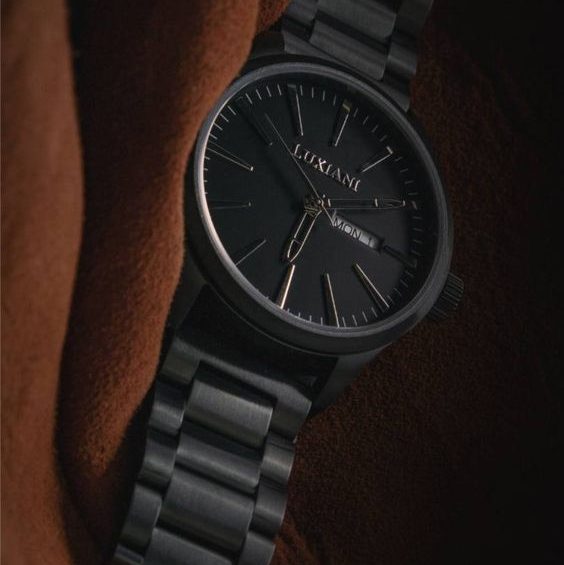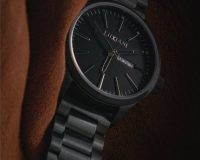Introduction: The Enduring Allure of Fine Watches
In a world racing toward innovation and change, there remains something profoundly comforting about the steady, elegant ticking of a fine watch. It speaks to a legacy of artistry, patience, and unwavering attention to detail. Unlike fleeting trends, a well-crafted watch transcends time, embodying an ageless sophistication that few other accessories can replicate. For centuries, watches have not only served as practical instruments but also as emblems of personal style, achievement, and heritage.
Today, the allure of a fine watch lies not merely in its ability to mark the hours but in the stories it carries—the story of the artisan who painstakingly assembled its movement, the traditions it upholds, and the bold vision of the individual who wears it. In every polished dial and meticulously engineered gear, there exists a quiet testimony to human ingenuity and aesthetic pursuit.
This exploration will take you deep into the intricate world of fine watches. From their fascinating history to the detailed craftsmanship involved, from evolving design philosophies to tips for selecting and caring for these timeless treasures, we invite you to discover why true elegance is forever woven into the art of horology.
The Evolution of Timekeeping: A Journey Through History
The quest to measure time has captivated humanity for millennia. Long before the advent of the wristwatch, ancient civilizations devised ingenious ways to track the passage of hours. From Egyptian sundials to Chinese water clocks, these early instruments reflected a universal human desire to bring order to the natural world’s rhythms.
As societies evolved, so too did the sophistication of their timekeeping devices. The medieval invention of mechanical clocks in Europe marked a major leap forward. Mounted in towering cathedrals and town squares, these early mechanical marvels symbolized both technological prowess and communal unity.
The birth of portable timepieces came in the 16th century with the creation of the first pocket watches. Miniaturized clock mechanisms, protected within ornately crafted cases, allowed the wealthy elite to carry time wherever they went. These early watches were prized more for their artistic beauty than their accuracy, yet they set the stage for what would come.
The transition from pocket watches to wristwatches in the late 19th and early 20th centuries marked another significant milestone. Initially popularized by military needs—where quick access to time could mean the difference between success and failure—wristwatches soon gained mainstream acceptance, particularly among women. Over time, men’s fashion embraced the wristwatch, and a new era of horological artistry was born.
Today, while digital technology has placed the time literally at our fingertips, the wristwatch retains its special place. A fine watch is no longer just a timekeeper—it is a statement, a piece of wearable art, and a connection to centuries of innovation and craftsmanship.
Masterful Craftsmanship: The Heartbeat Behind Every Fine Watch
Craftsmanship is the soul of fine watchmaking. Behind each ticking masterpiece lies the labor of countless skilled hands, each contributing to a creation that balances mechanical ingenuity with artistic beauty.
At the core of every fine watch is its movement—the intricate engine that drives its hands across the dial. Movements fall into two primary categories: quartz, powered by a battery, and mechanical, which relies on a complex interplay of springs, gears, and wheels. Within the mechanical family, automatic watches further distinguish themselves by harnessing the energy generated by the wearer’s motion to wind the mainspring.
Building a mechanical movement requires extraordinary precision. Tiny components, often no larger than a grain of sand, must fit together perfectly. One mistake in assembly could compromise the watch’s accuracy or functionality. Master watchmakers spend years honing their craft, developing the patience and dexterity needed to work at such a microscopic scale.
Yet beyond the technical marvel, craftsmanship extends to aesthetics. Skilled artisans hand-finish components using traditional techniques like perlage, Geneva stripes, and anglage. These decorative flourishes are often hidden from view, tucked within the movement, serving as silent oaths to the watchmaker’s commitment to excellence.
Case construction, too, demands perfection. Whether forged from stainless steel, gold, titanium, or ceramic, a watch’s case must strike a perfect balance between strength, comfort, and beauty. Similarly, dials are meticulously designed and finished, often featuring intricate guilloché patterns, enamel work, or painstakingly applied indices.
Straps and bracelets, whether crafted from fine leather, rubber, or precious metals, complete the masterpiece. Every stitch and link reflects careful consideration, ensuring the watch feels as luxurious on the wrist as it appears to the eye.
Ultimately, the art of fine watchmaking is a dance between engineering and emotion, tradition and innovation—a dance that results in a creation greater than the sum of its parts.
The Language of Design: Elements That Define Fine Watches
The design of a fine watch is a symphony of form and function. Every aspect, from the shape of the case to the choice of hands, serves a dual purpose: aesthetic appeal and readability. Achieving the perfect balance requires not only technical knowledge but a deep understanding of art, culture, and human behavior.
Case shape and size play a critical role in a watch’s character. Round cases are timeless and versatile, while square or rectangular designs offer a bold, modern edge. Oversized watches project strength and confidence, whereas smaller, thinner cases whisper elegance and restraint.
The dial is often the face through which a watch communicates its soul. Choices here abound: minimalist or intricate, monochromatic or vibrantly colored, traditional numerals or avant-garde markers. Some dials are adorned with complications—subdials, moon phases, or tourbillons—that serve both functional and decorative purposes.
Hands, often overlooked, are another vital design element. Dauphine hands exude vintage sophistication; sword-shaped hands convey strength; slender baton hands emphasize clarity and modernity. The choice of hands can dramatically alter a watch’s mood and readability.
Material selection further distinguishes fine watches. Metals such as platinum, rose gold, and stainless steel each bring distinct aesthetics and tactile sensations. Modern innovations like ceramic and carbon composites offer lightweight durability and futuristic flair.
Lastly, the strap or bracelet frames the watch on the wrist. Leather exudes classic luxury, steel bracelets suggest rugged durability, while rubber or textile straps offer sporty practicality. Even the clasp mechanism—be it deployant, buckle, or folding—reflects the maker’s commitment to design excellence.
Through thoughtful integration of these elements, fine watches transcend mere utility, becoming expressions of personal style, aspirations, and even philosophy.
Conclusion: Celebrating a Legacy of Timeless Elegance
The art of fine watchmaking is much more than a mechanical achievement; it is a testament to humanity’s enduring fascination with time, beauty, and craftsmanship. In a fast-paced digital age, where convenience often trumps tradition, fine watches remind us of the virtues of patience, meticulous effort, and timeless design.
Each carefully crafted timepiece encapsulates a legacy—a bridge between the past and the future, between the watchmaker’s vision and the wearer’s journey. It tells not only the hours and minutes but also tales of artistry, innovation, and personal triumphs. It transforms a simple measurement of passing moments into a profound celebration of life itself.
Owning a fine watch is an act of appreciation: for the skill of unseen hands, for the elegance of tradition, for the profound significance found in small, perfect things. As you wrap a masterfully crafted watch around your wrist, you do more than mark the time—you become a part of a timeless story, one that will endure long after the seconds have ticked away.
Thus, the elegance of a fine watch lies not just in its intricate movement or polished finish but in its ability to connect us across generations, inspire reverence for craftsmanship, and celebrate the precious, fleeting beauty of time itself.





1 Comment
Hi, this is a comment.
To get started with moderating, editing, and deleting comments, please visit the Comments screen in the dashboard.
Commenter avatars come from Gravatar.